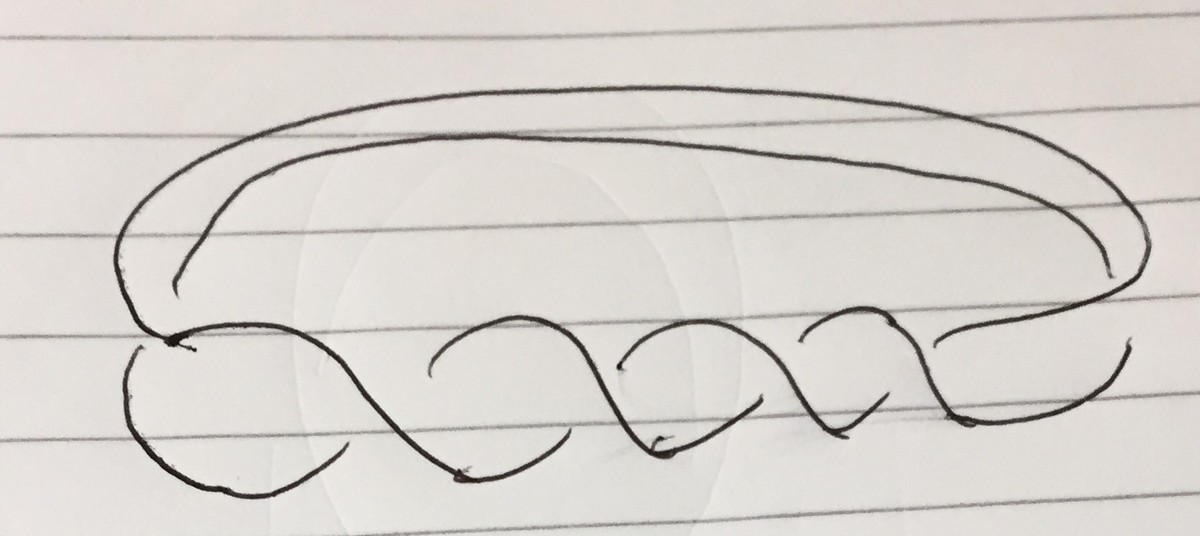Cutting The Möbius Strip I
Mathematical Disclaimer : This note is very speculative! There are no rigorous proofs, mathematical or otherwise. I'd like people to come with the frame of mind that this might be wrong and help show me why if it is. Anyway, let's get on with it already!
Let's start with a fun simple problem that you've probably tried before!
What happens when you cut a Möbius Strip a long the line that runs through the middle of it like in the picture below?
Well before we pull out the paper, scissors and sellotape do it let's make a prediction of what we will get. Here are a series of pictures of the first few steps representing what we might expect to see.
We start with something that looks like this.
And then when we cut along the red line we get something like so.
Collecting the 2 half twists and together we get.
Now, what do we do about that "Loop the loop" L ?
The claim is that this is equivalent to two half loops in the same direction as the others. I'm finding this very difficult to communicate why so let me know a good way to do this in the comments! Here's my best shot at showing this so far but for this one, I encourage you to try it with paper!
So then if this is true then the final result will be this

Well, what do you think? A lot of people, including myself, initially think that we get a 2 half twist loop but I have changed my mind on this.
Now I encourage you to try it with paper and sellotape and then count the number of half twists.
I'm planning on writing a note to describe a fun way to try answer the question of
"What if we keep on cutting the mid-lines simultaneously of whatever we get from starting with the Möbius Strip" .
It'll be non-rigorous but I think there is a really neat way of answering it with some fun applications!
Easy Math Editor
This discussion board is a place to discuss our Daily Challenges and the math and science related to those challenges. Explanations are more than just a solution — they should explain the steps and thinking strategies that you used to obtain the solution. Comments should further the discussion of math and science.
When posting on Brilliant:
*italics*or_italics_**bold**or__bold__paragraph 1
paragraph 2
[example link](https://brilliant.org)> This is a quote# I indented these lines # 4 spaces, and now they show # up as a code block. print "hello world"\(...\)or\[...\]to ensure proper formatting.2 \times 32^{34}a_{i-1}\frac{2}{3}\sqrt{2}\sum_{i=1}^3\sin \theta\boxed{123}Comments
There are no comments in this discussion.